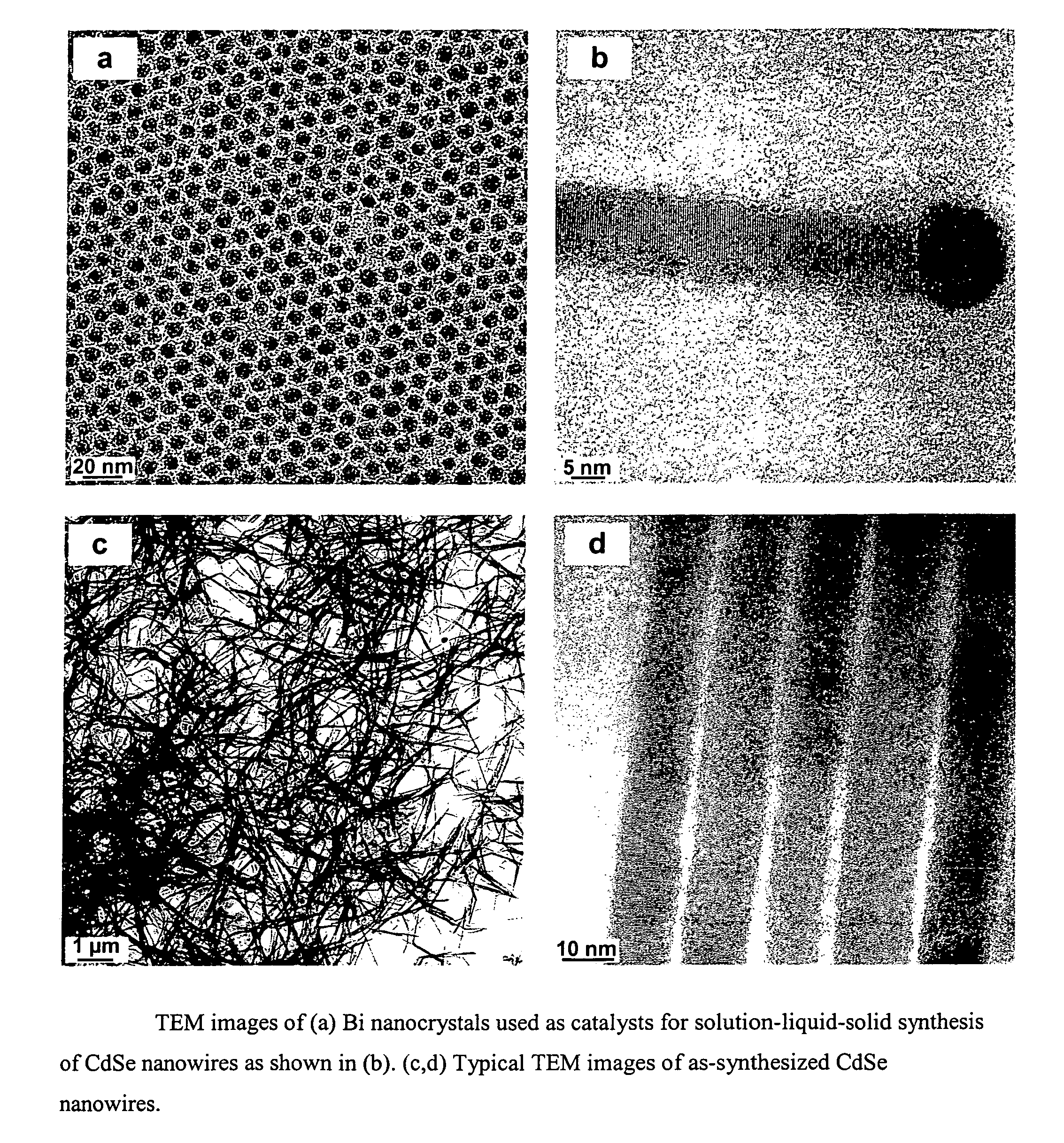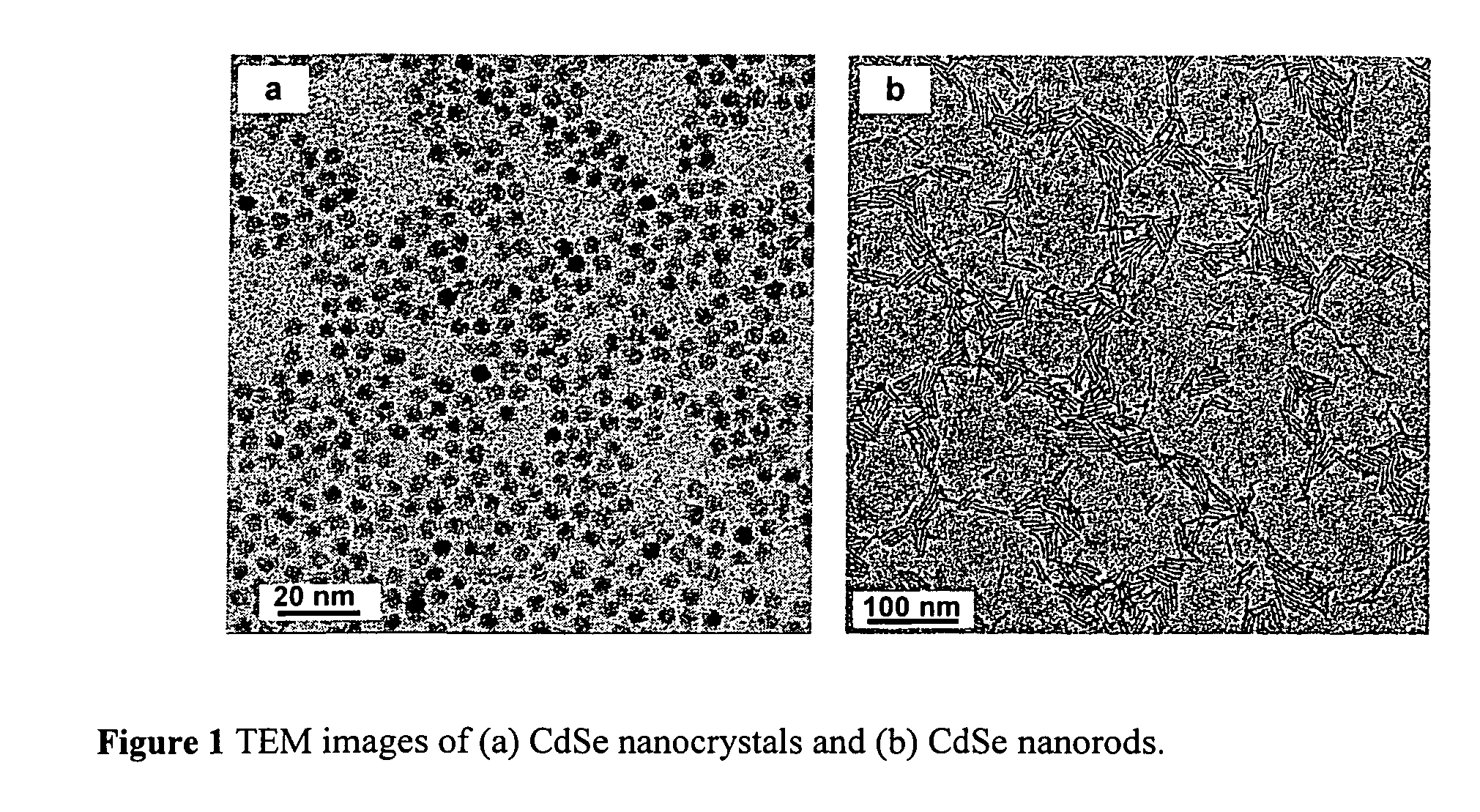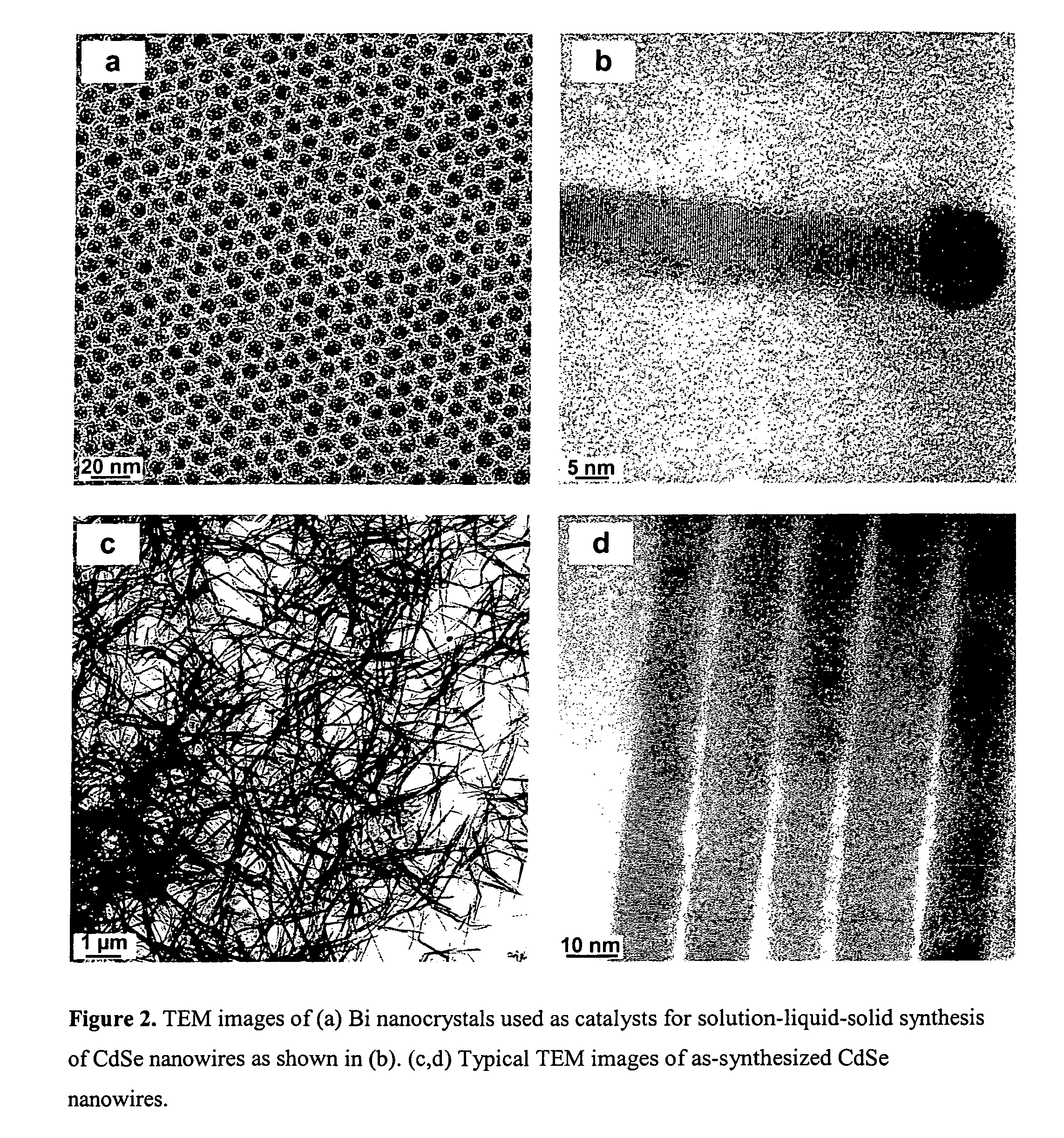Method for fabricating an inorganic nanocomposite
a technology of inorganic nanocomposites and nanocomposites, which is applied in the direction of natural mineral layered products, coatings, chemistry apparatuses and processes, etc., can solve the problem that the bulk inorganic semiconductors of interest are not soluble in common solvents, and achieve the effect of gate voltage scan hysteresis
- Summary
- Abstract
- Description
- Claims
- Application Information
AI Technical Summary
Benefits of technology
Problems solved by technology
Method used
Image
Examples
example 2
[0079]A composite material prepared from CdSe nanocrystals and (N2H5)2(N2 H4)2In2Se4 soluble In2Se3 precursor.
Step 1:
[0080]A 0.25M solution of (N2H5)2(N2H4)2In2Se4 in hydrazine is prepared by dissolving 1 mmol In2Se3 in 4 mL hydrazine in the presence of 1 mmol selenium at room temperature [D. B. Mitzi, M. Copel, S. J. Chey, Adv. Mater. ,17, 1285 (2005)]. The colorless solution is filtered through a 0.2 μm PTFE filter and stored under nitrogen.
Step 2:
[0081]CdSe nanocrystals capped with trioctylphosphine oxide and trioctylphosphine (TOPO-TOP) ligands are synthesized according to the literature method [C. B. Murray, D. J. Norris, M. G. Bawendi; J. Am. Chem. Soc.; 1993; 115; 8706.]. The nanocrystals are thoroughly washed from the excess of stabilizing ligands by several precipitation and redissolution steps and stored either as a powder or as a solution in hexane.
Step 3:
[0082]The CdSe nanocrystals are easily dispersed in the hydrazine solution of (N2H5)2(N2H4)2In2Se4, forming a stable c...
example 3
[0090]A Composite material prepared from PbSe nanowires and (N2H4)2ZnTe soluble ZnTe precursor.
Step 1:
[0091]The hydrazine-soluble molecular ZnTe precursor (N2H4)2ZnTe is synthesized according to the literature method [Mitzi, D. B.; Inorg. Chem.; 2005; 44; 7078.].
Step 2:
[0092]PbSe nanowires capped with n-tetradecylphosphonic and oleic acids are synthesized as described in YOR9-2004-0429US2. The typical TEM and HRTEM images are shown in FIG. 14.
Step 3.
[0093]PbSe nanowires can be dispersed in hydrazine in the presence of 25 mg / mL (N2H4)2ZnTe, forming a stable colloidal solution after several days of stirring at room temperature under nitrogen atmosphere.
Step 4:
[0094]Nanocomposite precursor films are spin-coated from a hydrazine solution containing PbSe nanowires and (N2H4)2ZnTe (as described for Example 1). FIG. 15a shows a TEM image of the film consisting of PbSe nanowires embedded into a matrix of (N2H4)2ZnTe.
[0095]Step 5:
[0096]Annealing at 250° C. for 20 min converts (N2H4)2ZnTe int...
PUM
| Property | Measurement | Unit |
|---|---|---|
| temperature | aaaaa | aaaaa |
| thickness | aaaaa | aaaaa |
| thickness | aaaaa | aaaaa |
Abstract
Description
Claims
Application Information
 Login to View More
Login to View More - R&D
- Intellectual Property
- Life Sciences
- Materials
- Tech Scout
- Unparalleled Data Quality
- Higher Quality Content
- 60% Fewer Hallucinations
Browse by: Latest US Patents, China's latest patents, Technical Efficacy Thesaurus, Application Domain, Technology Topic, Popular Technical Reports.
© 2025 PatSnap. All rights reserved.Legal|Privacy policy|Modern Slavery Act Transparency Statement|Sitemap|About US| Contact US: help@patsnap.com



